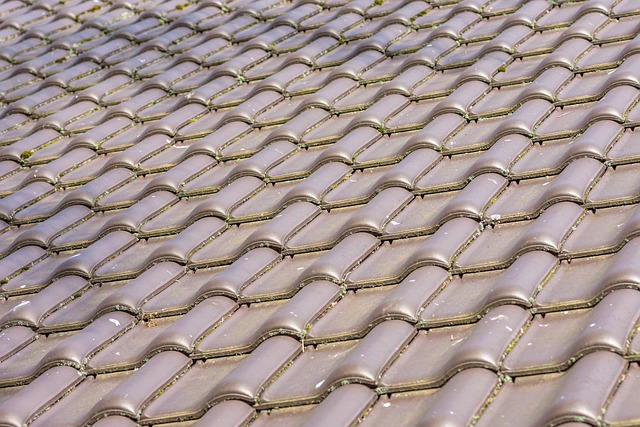Commercial flat roofing demands durable, long-lasting solutions that meet stringent regulations. Choose weatherproof materials like membranes and coatings to prevent leaks, fire-rated underlayments for safety, and strategically select materials based on structural integrity, energy efficiency, and lifespan. Key options include modified bitumen and metal roofs, offering superior longevity, adaptability, durability, and cost savings. Proper installation, regular maintenance, and preventative care ensure commercial flat roofs provide decades of reliable protection against the elements.
In the realm of commercial flat roofing, longevity is paramount. This comprehensive guide explores high-quality materials designed to withstand the rigors of modern business needs. From understanding the unique demands of commercial roofing to discovering popular options and essential installation tips, we equip you with knowledge for optimal performance. Learn how to select, maintain, and care for your flat roof to ensure a robust, long-lasting solution.
- Understanding Commercial Flat Roofing Requirements
- Key Factors in Choosing High-Quality Materials
- Popular Options for Longevity and Performance
- Installation, Maintenance, and Long-Term Care Tips
Understanding Commercial Flat Roofing Requirements
Commercial flat roofing requires a thoughtful approach due to its unique challenges and demands. Unlike residential roofs, commercial structures often host larger loads, intense environmental conditions, and stringent fire safety regulations. Moreover, these roofs typically demand long-term durability and low maintenance to justify their significant upfront investment. Therefore, choosing the right materials is crucial for ensuring structural integrity, energy efficiency, and cost-effectiveness over the building’s lifespan.
When selecting materials for commercial flat roofing, consider options that offer superior resistance to extreme weather, such as heavy rain, snow, or intense sunlight. Waterproofing membranes and reflective coatings can enhance durability and reduce the risk of leaks, a common concern in flat roofs. Additionally, considering fire-rated underlayments is essential to meet safety standards, preventing the rapid spread of flames across the roof deck.
Key Factors in Choosing High-Quality Materials
When selecting high-quality materials for a commercial flat roof, several key factors come into play. First and foremost, consider the climate and weather conditions in your region. Different roofing materials have varying levels of durability against extreme temperatures, rainfall, snow, and UV radiation. For instance, a material that excels in preventing leaks due to heavy rain might not be as effective in resisting heat expansion and contraction.
Additionally, the structural integrity and design of the building should influence your choice. Flat roofs, especially in commercial settings, often bear significant weight, so materials need to be robust and capable of supporting this load. Moreover, consider the material’s lifespan, warranty, and maintenance requirements. High-quality flat roofing materials should offer long-term protection, come with manufacturer warranties, and require minimal upkeep to ensure their longevity and preserve your investment.
Popular Options for Longevity and Performance
When it comes to choosing materials for a commercial flat roofing system, longevity and performance are paramount. Two popular options leading the way in durability and reliability are modified bitumen and metal. Modified bitumen roofs offer an affordable, low-maintenance solution with a proven track record of enduring harsh weather conditions. This flexible membrane is reinforced with fabric layers, making it strong yet adaptable to various environmental factors.
Metal roofing, another top choice, provides exceptional longevity and resistance to damage. Steel and aluminum are commonly used due to their durability, reflectivity (reducing energy costs), and low maintenance requirements. These materials can withstand extreme temperatures, impact from debris, and even fire, making them ideal for commercial buildings seeking a robust flat roofing solution.
Installation, Maintenance, and Long-Term Care Tips
A well-installed and properly maintained commercial flat roof can last for decades, providing a robust shield for any business or property. Installation should be handled by experienced professionals who understand the unique challenges of flat roofing, such as ensuring adequate slope for drainage and using appropriate fasteners to secure the membrane. Regular maintenance checks are vital throughout the lifespan of your flat roof. This includes inspecting for signs of damage, particularly after extreme weather events, and promptly repairing any leaks or punctures. Cleaning gutters and drains is also essential to prevent water buildup, which can lead to structural issues over time.
Long-term care involves a combination of proactive measures and responsive solutions. Using high-quality flat roofing materials from the outset significantly increases their longevity. Additionally, staying on top of routine maintenance can save significant costs down the line. Implement a preventative maintenance schedule that includes regular checks for wear and tear, and address issues before they escalate. With proper care, commercial flat roofs can provide years of reliable protection, ensuring your property remains safe and secure against the elements.
When it comes to commercial flat roofing, investing in high-quality materials is key to ensuring longevity and performance. By understanding the specific requirements, considering key factors like durability and weather resistance, and opting for popular yet reliable options, businesses can minimize maintenance needs and maximize the lifespan of their roofs. Proper installation, regular care, and timely maintenance are also vital components that contribute to a robust and efficient commercial flat roofing system.
